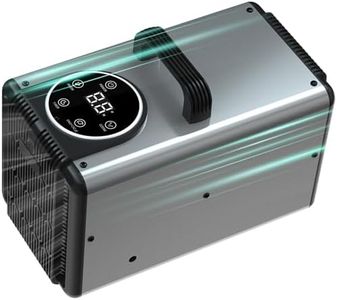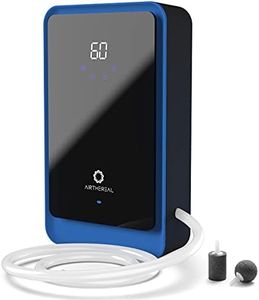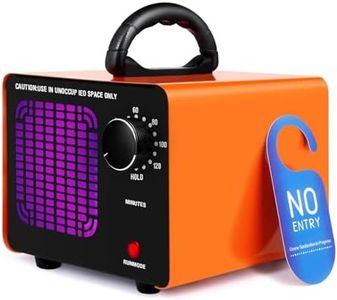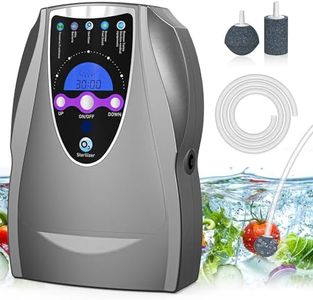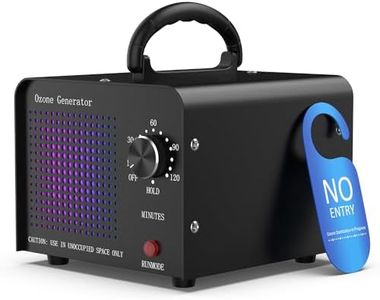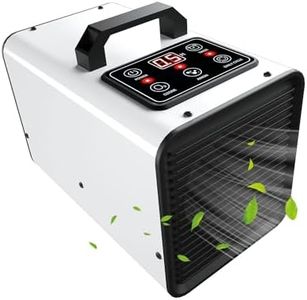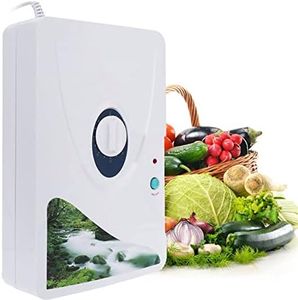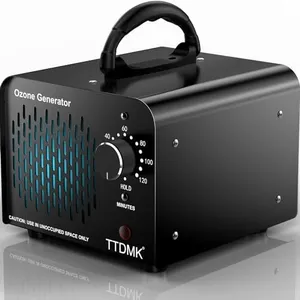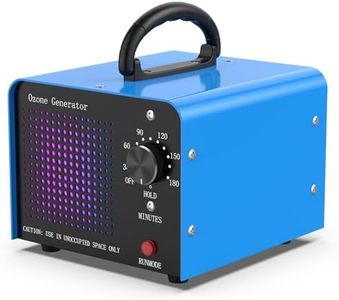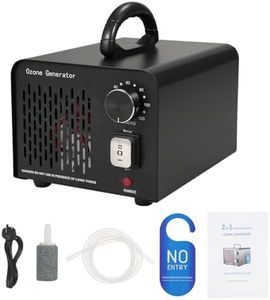We Use CookiesWe use cookies to enhance the security, performance,
functionality and for analytical and promotional activities. By continuing to browse this site you
are agreeing to our privacy policy
10 Best Ozone Machine
From leading brands and best sellers available on the web.Buying Guide for the Best Ozone Machine
Choosing an ozone machine can be a bit daunting if you’re not sure what makes one model different from the next. Ozone machines are used to purify air, remove odors, and kill bacteria or mold in homes, offices, or even cars. The core idea is to match the machine’s capacity to your needs while considering safety, effectiveness, and ease of use. Understanding the essential specs will help you pick a machine that is powerful enough for your space without being unnecessarily complicated or unsafe.Ozone Output (mg/h or g/h)Ozone output tells you how much ozone the machine can produce in an hour, usually measured in milligrams per hour (mg/h) or grams per hour (g/h). This is important because it determines how quickly and effectively the machine can treat a space. Smaller spaces or quick jobs only require a low-output machine, usually under 2,000 mg/h, while larger rooms or heavy-duty use might benefit from units producing 5,000 mg/h or more. To pick the right one for you, think about the size of the area you'll be treating and the severity of the odors or contaminants. For home or car use, a device with moderate output is usually enough, but bigger or heavily contaminated spaces may need a higher-output machine.
Timer FunctionA timer lets you set the machine to run for a specific amount of time and then automatically shut off. This is important for safety, as ozone is harmful to breathe in high concentrations. Timer options can range from a simple mechanical knob offering up to an hour, to programmable digital timers that let you set longer or more precise times. If you plan to run the machine in your absence or while leaving a space unoccupied, a timer makes sure you don’t expose yourself or pets unnecessarily. Pick a machine with a timer that suits how long you typically want to run treatments.
Area CoverageArea coverage tells you the maximum room or space size the ozone machine is designed to treat effectively, often measured in square feet or square meters. This is crucial because using a machine that is too weak for the space will not be effective, while using an overly powerful machine in a small space can be risky. Manufacturers usually provide a recommended coverage area; match this to the largest space you plan to treat. For small rooms or single areas, a lower coverage spec works well, but for open spaces or entire homes, a higher capacity is better.
Portability and SizePortability refers to how easy the machine is to move and includes considerations like weight, handles, and overall dimensions. If you want to use the machine in different rooms or even take it to different locations, a compact and lightweight design will be much more convenient. If the machine will mostly stay in one place, this might not matter as much. Think about where and how you’ll use it most often to decide what level of portability you need.
Filter Type (if any)Some ozone machines include additional filters, such as HEPA or carbon filters, to trap particles or help remove odors even further. This feature adds an extra layer of cleaning and can be useful if you’re also dealing with dust, allergens, or smoke, not just odors. If air quality is a particular concern, consider a unit with built-in filters. If you only want ozone shock treatment, a basic model without filters may be sufficient.
Ease of UseEase of use covers things like controls, display readability, and how straightforward the instructions are. Some machines have simple dials and switches, while others may feature digital displays or even remote controls. If you want a set-it-and-forget-it experience, look for intuitive controls and clear instructions. For users comfortable with some setup, more advanced options are available. Consider your comfort level with electronics and how much convenience you want.
Safety FeaturesOzone can be hazardous if not used properly, so safety features like automatic shutoff, warning lights, and child locks are important. Some machines include sensors to stop ozone production if people are detected in the room. Depending on your situation—such as having kids, pets, or forgetful users—look for models that prioritize making sure ozone is only produced when the machine is operating as intended and everyone is safely out of the room.

